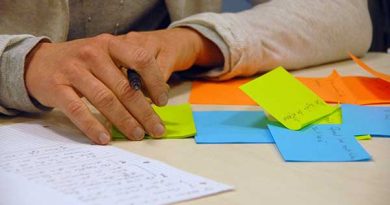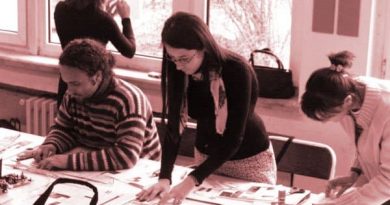How to Conduct a Successful UX Research for Your Design Project
Lacking a clear understanding of the project target audience can prevent a design team from developing a product that fulfills the end user’s needs and expectations. Before starting a project, many questions come to mind including “What is the target market segment?”, “What are the user problems that we can address?” and “How we can address them?” All these questions can be answered by conducting reliable user experience research. UX research tends to build a user-centered design through understanding the user’s needs, impressions, and expectations about the product.
While many companies understand the importance of UX research, few are doing it properly, which puts them at risk of collecting misleading information. For example, unclear understanding of the target audience may lead to the collection of information about a totally different segment of the population that is out of the product’s scope. Additionally, UX research contributes to innovation, as the newly developed product aims to address the user’s needs based on the feedback collected from real users. Also, it can help improve existing products, making them more helpful and usable, and subsequently competitive in the market.
The UX Research Process
Many companies jump directly to collecting data for the research without clear planning for the process. This may lead to inaccurate data. In order to execute solid and reliable UX research five UX research steps should be followed. These steps include the following:
- Objectives: this step tends to identify what the target of the UX research is.
- Hypotheses: this step tends to identify what we already know about the user.
- Methods: this step determines the methods that will be used in the UX research.
- Conduct: in this step the team starts the research and collects the information.
- Synthesis: this step analyzes the collected data and builds a clear understanding of the user experience.
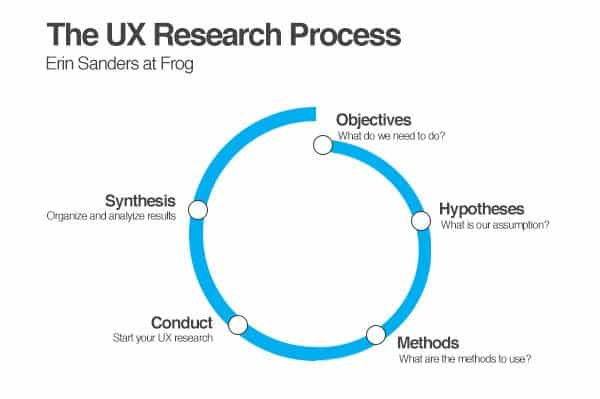
These steps aim to ensure that the research results are accurate and meet the intended objectives we will explore below:
Step 1: Define Objectives
For every process, there must be a clear objective. UX research is used to achieve three main benefits. These three benefits can form the objectives of the UX research process. These benefits include:
- Product benefits: the UX research aims to understand users’ impressions of the product in order to improve the product or understand the problems that the product is expected to solve.
- Business benefits: the UX research aims to add value to the business by creating a better understanding of the users.
- User benefits: this is considered the core value of UX research as it puts the user at the heart of the process.
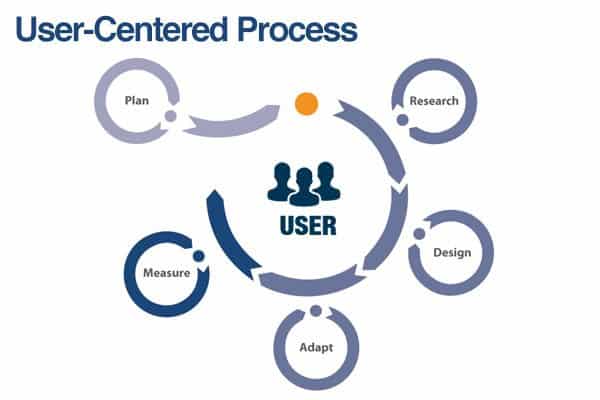
The objectives phase should define the main purpose of UX research and the added-value of conducting the research. The objectives can be found by answering questions such as “What are the users’ impressions of the product?”, “What do they love and hate about it?”, “Who is the main segment of the product?” and “How will the product will solve users’ problems?” etc.
The objectives should be formed and written clearly as they will guide the team in the following steps, and achieving these objectives will define the failure or success of the UX research process. In this stage no tools are required; the ideas may get linked together using mind maps which help the team to visualize the connections between objectives that need to be fulfilled.
Step 2: Hypotheses
At this stage, we usually don’t have a clear understanding of either the user or the relation between him/her and the product. However, we should start with a number of generic ideas that need to be tested during the research. The inductive reasoning approach can be adopted at this stage in order to form general hypotheses that can act as a guide while doing the research. Before starting the research, we need to provide an assumption about the research problem. Generally, there are three main types of hypotheses:
- Attitude-related hypotheses focus on the user attitude. For example, “application users like to share videos with their friends.”
- Behavior-related hypotheses focus on the user behavior. For example, “application users share recent videos with their friends.”
- Feature-related hypotheses focus on the product feature. For example, “application users share content from the Top List area with their friends.”
While these hypotheses are used as a guide and can be simply true or false, they should be defined as accurately as possible to reduce the irrelevant options and team biases toward specific predetermined options.
Step 3: Methods
After defining the objectives and the hypotheses, this step aims to define the research methods that will be used in UX research. Generally, the research methods are categorized under two main sections: secondary research and primary research methods that collect either quantitative data or qualitative data. Quantitative data focus on accurate numbers and measurements while qualitative data focus on the opinions, experience, and non-measurable information.
Secondary Research
This type of data depends on information that was previously collected for similar research. For example, UX research done for a previous project, data collected from government information centers, local libraries, journals or books. While this type of research is easier to find, as well as being time and cost effective (as the research results are already done before), it isn’t comparable to primary research. Because the data was collected for a previous project, the characteristics of the data may vary from the needs of the existing research. Secondary research can be used in UX research with a low budget or a limited timeframe. It is commonly adopted in Guerrilla marketing research where there are limitations in budget, team, or project time.
Primary Research
Primary research is more accurate than secondary research because researchers collect the data themselves and tailor the research questions to meet the project’s objectives. On the other hand, primary research is considered more expensive and requires more time and effort compared with secondary research, as the team needs to collect the data themselves. There are many methods that can be used in primary research, such as the following:
- Offline and Online Survey is a quantitative data method that allows a team to collect information based on a questionnaire that can be delivered to the user through a printed format, online (through websites such as Survey Monkey), phone call or online chat. Surveys are a handy way to conduct primary research because they are affordable and don’t need much preparation. However, collected data may be misleading as the users answer the questions without the supervision of a researcher.
- Interviews are a qualitative data source that allows researchers to learn about the user’s feelings and impressions about the product. The interviews can be face-to-face, online and through the phone. While it helps to learn about the user experience based on their impressions, body language, and facial expressions, interviews need preparation to choose the proper time and place for the call.
- Focus Groups are similar to interviews with one difference; they include more than one user during the sessions and are run by a facilitator. It helps to gather feedback from more than one person at the same time which makes it more effective compared to interviews. However, focus groups need preparation and users may be affected by each other’s opinions.
- Observation depends on the researcher observing how users use the product and interact with it. It gives an idea about how to improve the product. This method is effective if applied with other methods (especially quantitative methods such as surveys) as it can include the researcher’s opinion and impressions about user behavior.
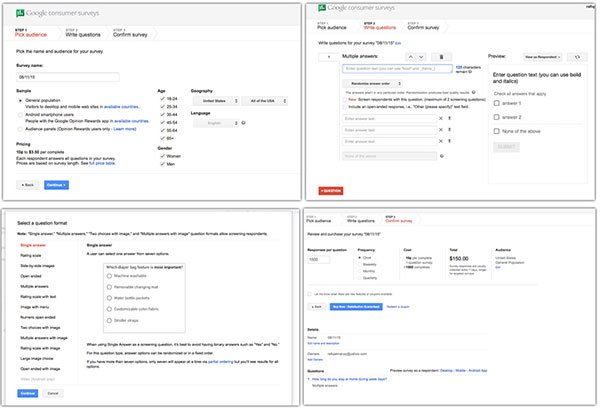
Choosing the right research method depends on the objectives and the data that need to be collected. If the team needs to learn absolute numbers, then quantitative methods such as surveys can be adopted. The project timeline, UX research cost, and available team also affect the choice between secondary or primary research methods and which primary method to use.
Step 4: Conduct
Once the team responsible for using the UX research method described above is prepared, this stage starts by collecting the data from the targeted segment. At this stage, the collected data are raw materials and separate pieces of information that need to be organized and analyzed in the next step. At this stage, the data collector and facilitators play an essential role in ensuring that the collected data are accurate and are not biased by any external factors. In interviews and focus groups, the facilitators need to ensure that the users are only affected by their experiences and avoid any distractions or bias from the other users or the facilitators themselves. Otherwise, the data will not be truly representative of the user experience. The time and the place of distributing the research surveys and questions need to be chosen carefully, as they may affect the user’s decisions or answers.
Step 5: Synthesis
As mentioned earlier, this step includes organizing and analyzing the collected data and using it to plan the next stages on the development process. At this stage, both the qualitative and quantitative data are collected together and the team seeks to gain an overview of the user from the data. These data can be organized in a form of a persona empathy map that describes what the users love and hate about the product, to understand the users’ emotional relations with the product. Many companies mistakenly stop at this point. However, the analyzed data in this process can be used as a source of secondary research in future projects.
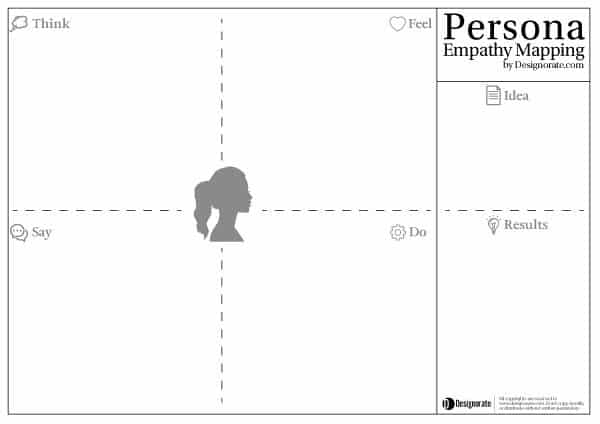
The UX research process is considered one of the most essential stages of the product development process. This is not only because it’s conducted at an early stage of the product development process, but also because it is the process that allows the design team to understand their user’s behavior, and develop or improve their product based on the user’s needs. It provides the understanding that leads to building a user-centered product that can achieve success in the market.
The process tends to gather and analyze information about the target user’s experience of the product or service. The five steps of UX research can’t be neglected. Otherwise, the research data won’t be accurate or representative of the target segment in the market. Therefore, companies should follow the five steps in order to create accurate mean data about their users. These data will be also be used in future UX research projects as secondary data.



